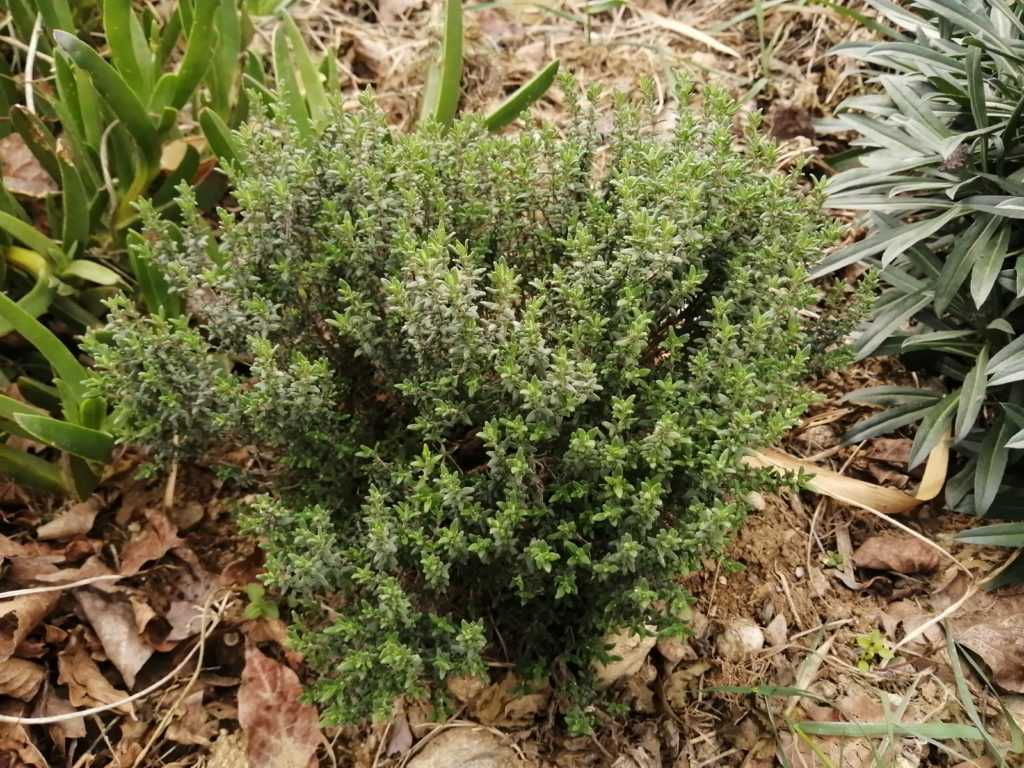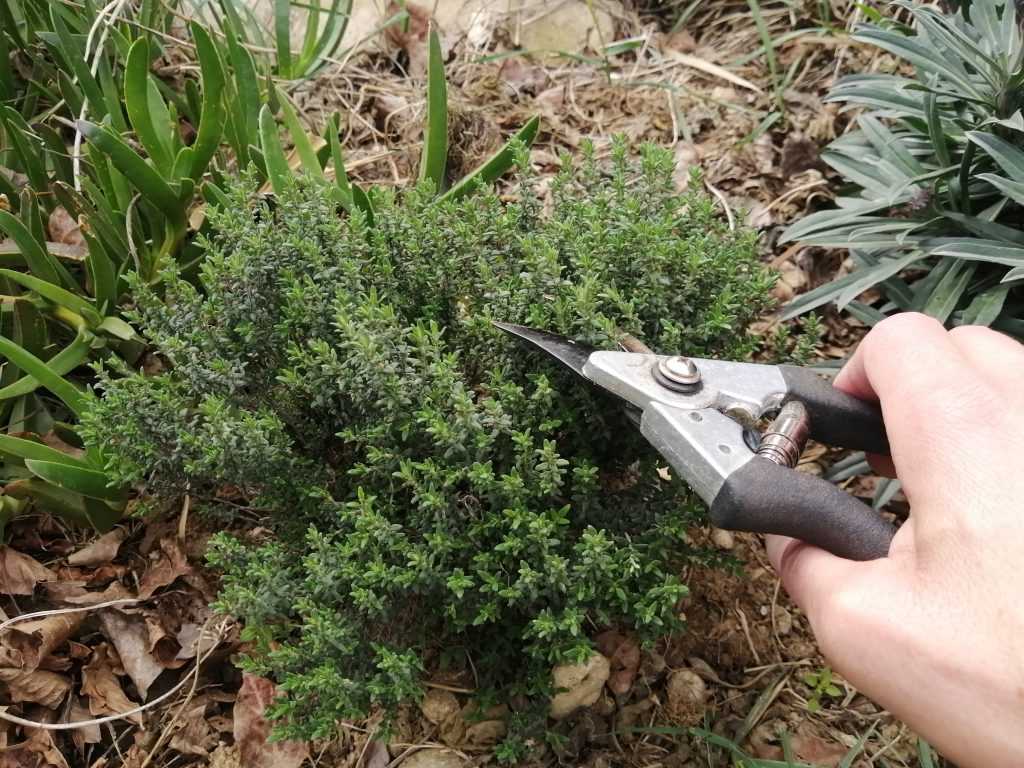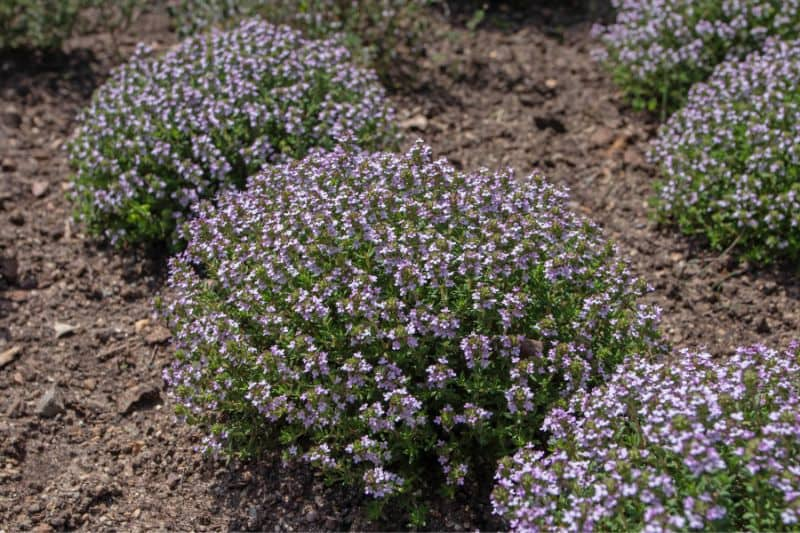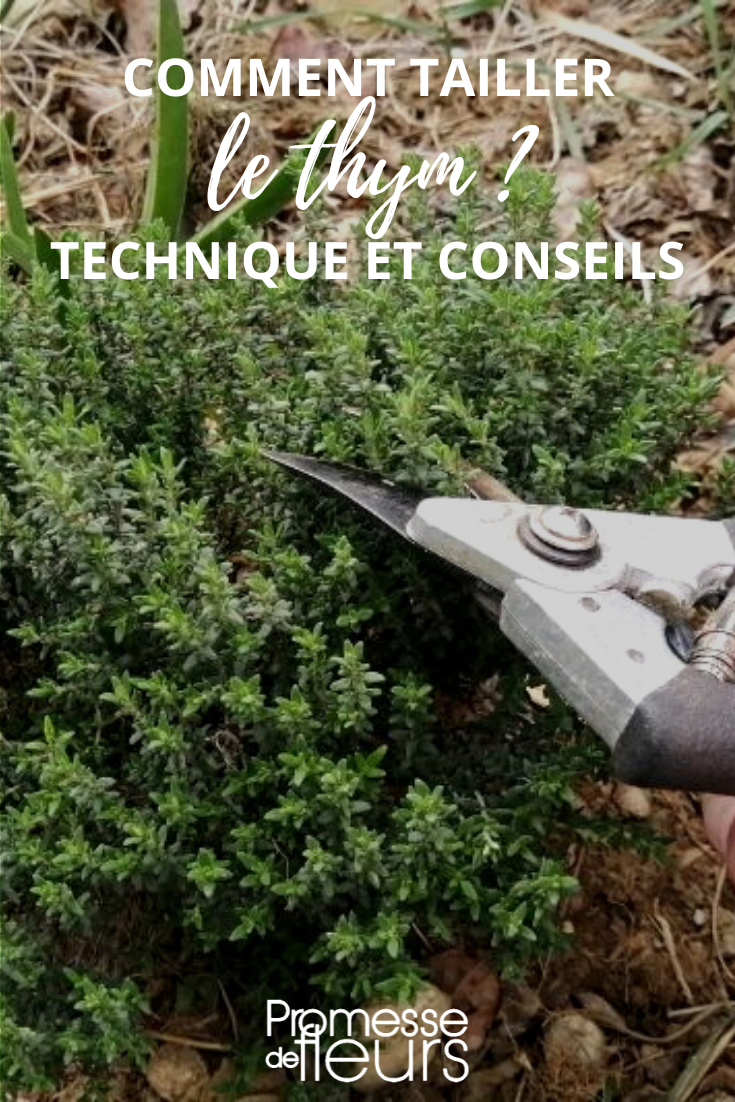Small perennial shrub with a rather spreading habit, thyme (Thymus vulgaris) is valued for its tiny evergreen leaves, very narrow, which perfume many dishes. Besides its aromatic properties, thyme is known for medicinal virtues, especially when prepared as an infusion.
Although emblematic of Mediterranean scrubland where it grows naturally in the garrigue, thyme can be grown throughout France thanks to its hardiness. It nevertheless needs perfectly drained, light soil, which can be stony. As for container growing, it suits thyme well. Easy to maintain, thyme only requires an annual pruning to retain a bushy aspect.
Discover all our tips to prune thyme correctly.
Why pruning thyme?
Pruning allows thyme to keep a rounded, compact and tight habit. Indeed, as it develops, thyme tends to thin out in the centre, its branches collapse, spread out and open to the sides. The plant takes on a lanky appearance and loses all aesthetic appeal.
Pruning stimulates emergence of new shoots that will enable the plant to regrow from the base and form a nice, dense ball.
Similarly, with age, as with lavender, thyme stems become lignified and harden so much that new buds struggle to break through. Severe pruning on this old wood is not productive, because thyme will have difficulty producing new shoots. Therefore, act before formation of this hard wood.
Pruning also aims to increase thyme longevity by encouraging it to ramify.
Pruning therefore concerns shoots of the year.

When to prune thyme?
Thyme is pruned in spring, just before flowering, in March or April. At that time the plant is in full development and growth, its leaves concentrate all aromatic agents. Pruning can also be done at the end of flowering, around June. This avoids the plant wasting energy producing seeds and allows it to focus on vegetative growth.
By contrast, pruning in autumn or winter is not recommended, as it may disturb its rest phase.
How to prune thyme?
Pruning should be light, but it can still shorten the thyme clump by up to half to encourage production of new, dense shoots.
- Sharpen carefully blades of your pruning shear then disinfect them with methylated spirits or 90° alcohol
- With your hand, lay thyme stems down slightly to see the base clearly
- Then, cut back branches from upper part to about halfway, trying to give a rounded shape to your thyme plant. Leave at least 5 to 10 cm of vegetation

- Do not throw away cut branches as you can use them in infusions, fresh or dried
- You can remove a few dead woody stems, but sparingly.
If you prune at the end of flowering, cut stems just below the flowers.

My tip: to obtain stems richer in active compounds, prune in the morning!
And creeping thyme, pruning or not?
The creeping thyme (Thymus hirsutus), better known as bristly thyme or hirsute thyme, forms a low tapetum with very dense foliage thanks to stems that root where they touch soil. It is used as an alternative to lawn and makes a very regular, melliferous groundcover that helps against weeds. It can also be planted in borders, between paving slabs of a path, in gaps of a low wall...
By multiplying varieties, a colourful patchwork of different foliage and different flowerings can be created.
Advantage of this creeping thyme lies in the fact that it requires no particular maintenance, therefore no pruning.
To learn more
Discover:
- Our complete range of thyme
- Our plant sheet on planting, growing and caring for thyme
- Our tutorials on growing thyme in a pot and drying and storing thyme properly.
































Comments